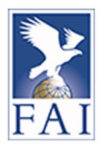
Since we published that article, Blackwing Sweden CEO Niklas Anderberg offered more details and — because this was a popular read for many visitors — it is worthwhile to tell you, as famous radio broadcaster (and aviation enthusiast *), Paul Harvey, used to say “…the rest of the story.”
— In His Own Words —
“On April 15th, a personal dream of mine came true,” wrote Niklas earlier today. “We pushed the turbocharged Blackwing aircraft to a new speed record in FAI‘s Microlight RAL2T Category.”
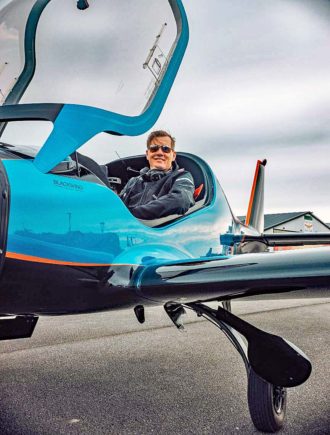
“Due to the pandemic, unique possibilities opened up. We could fly at any altitude we would like, with the support from Sweden control [ATC]. On Saturday, we practiced the world record course three times. It was challenging to fly over 200 knots (400 kilometers per hour), bank three G, and still keeping a precise altitude. We also started to fly at heights, FL90-110, and at speeds higher than we ever have flown before. It felt good to have a parachute.
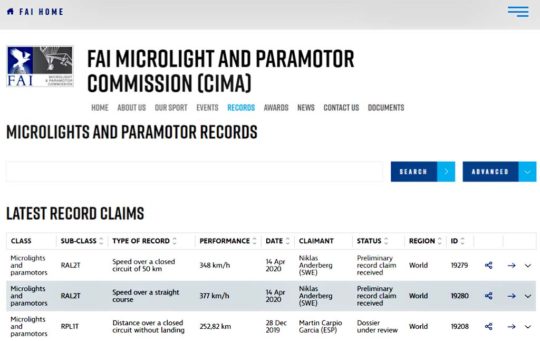
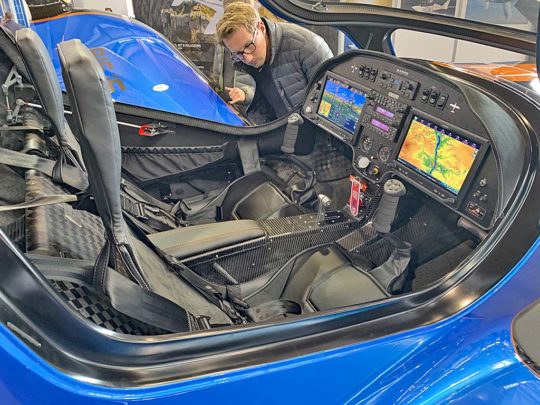
“The aircraft used for the record is a standard BW600RG with the Rotax 915iS engine. In order to optimize the drag, we only had one outside antenna and sealed some of the gaps.”
Once again, my heartiest congratutions to Niklas, Fredrik, and Team Blackwing, for a job well done!
This Ain’t Over Yet
Meanwhile, in nearby Belgium, the folks from JMB Aircraft are promoting their own speedy Light-Sport Aircraft-like equipped with the Rotax 915iS.
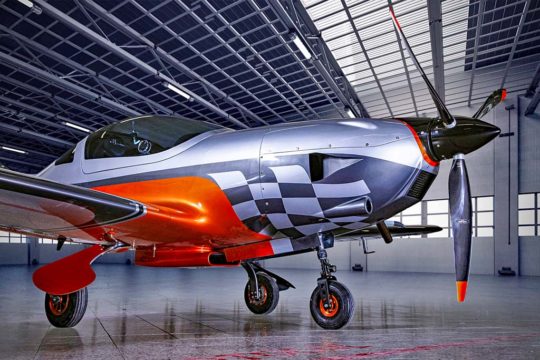
On April 25th JMB added, “With all nominal operating parameters, we climbed to FL180 in 13 minutes with one short level off due to a too-fast climb reported by ATC. The conditions were ISO +7 degrees Celsius (45°F) and 600 kilogram MTOW. Our test pilots performed a level flight of several minutes at maximum continuous power and reached 380 km/h (205 knots) true airspeed, breaking the mythical 200 knot barrier.”
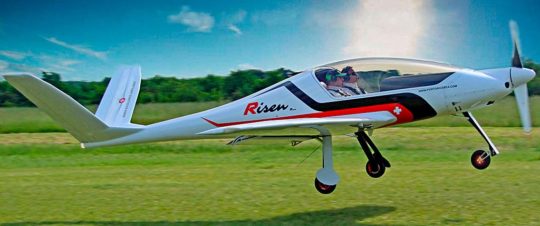
As the world slowly begins to emerge from the global lockdown, who know what speed feats we’ll see next.
Not to leave Americans behind, consider Arion Aircraft‘s Yankee speedster, the Lightning XS (currently Experimental, but who knows in 2023?).
* Paul Harvey was a very popular radio commentator who donated a substantial sum to EAA for the organization to establish a video studio. Each of his broadcasts began with, “You know what the news is; in a minute you’re going to hear the rest of the story.”


The Blackwing Edge has the weights of an LSA and I think stall speed as well, at least with flaps.
Could it be registered as an ELSA that fits FAA requirements if the max continuous power is defined so it doesn’t exceed 120 knots at sea level in the way that Bristell does it so a Sport Pilot could fly it today? It’s not an approved SLSA of course but it can be fixed gear and can use a ground adjustable prop.
Hi (I don’t really want to call you “fatsportpilot”): Blackwing could be flown here as an Experimental IF the company is willing to sell a kit and offer support for its construction. No aircraft producer can offer an ELSA until they have first won acceptance as a SLSA… so that is not an option. I am unaware of any plan by the Swedish company to pursue Special LSA status. As an Experimental, a small number might be allowed as Experimental-Sales and Marketing (for someone attempting to deal the aircraft) or Experimental-Exhibition (qualifiers apply) but otherwise, Blackwing is significantly blocked for operation by Americans — unfortunately.
However, after the LSA 2023 regulation is put into force, Blackwing may try for SLSA status so they could sell a retractable gear, adjustable prop, speedier model. We will have to see how this unfolds.